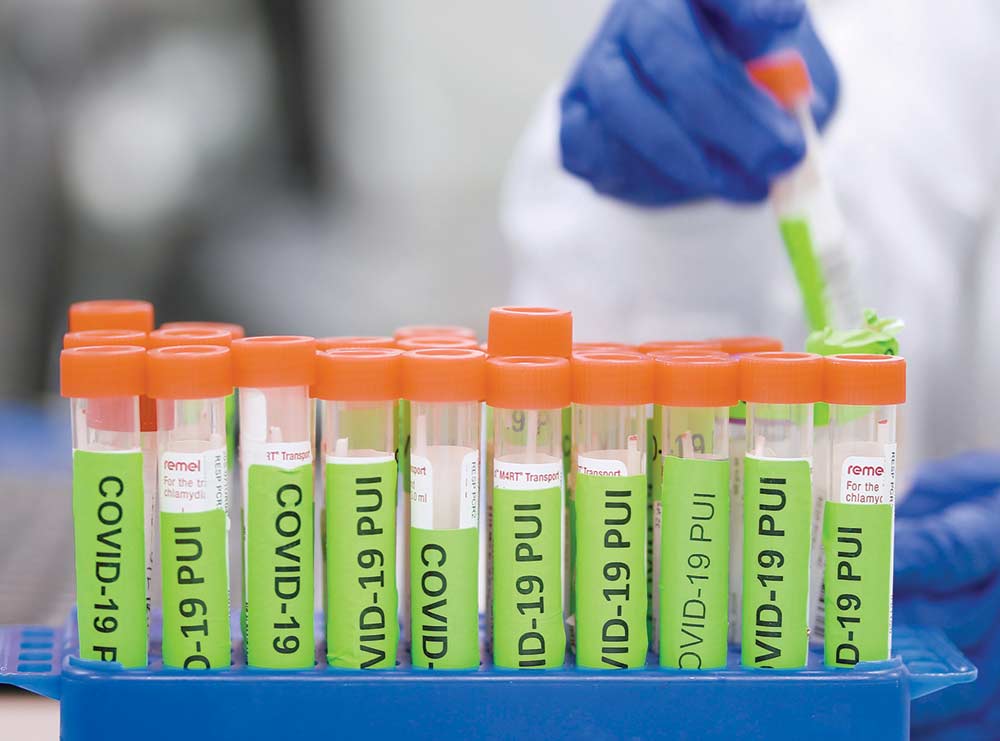If the numbers are to be believed, the coronavirus story is one of disproportionate impacts. Nationwide, low income people and people of color are more likely to suffer from Covid-19. And although North Bay governments have been somewhat slower to release data than some counties in the Bay Area’s urban core, the trend remains consistent locally.
After months of lag, all three North Bay counties—Sonoma, Napa and Marin—now offer online maps displaying total and active cases. While the maps aren’t too granular, they do offer insights into which areas are hotspots. Much like the rest of the state, Latinx residents in the North Bay are generally the most likely demographic to have contracted Covid-19.
When two Bay Area counties published caseload data by zip code months ago, the maps showed similar conclusions. San Francisco’s first zip code-level data, published in April, showed that neighborhoods on the east side were overrepresented.
“Unfortunately, it looks like many other maps in San Francisco, including those that depict health disparities, income inequality and racial and ethnic inequities,” Dr. Grant Colfax, the director of the Department of Public Health, said at an April 20 press conference when the data was first released.
In May, the Bay Area News Group reported that a third of Santa Clara County’s first 100 Covid-related deaths occurred in four heavily Latinx zip codes in East San Jose. Santa Clara County’s Covid map shows that those same zip codes still have among the most active cases in the county.
North Bay residents have had a similar, though more anecdotal, understanding of the disproportionate impact of Covid on communities of color based on data released by the counties so far.
All three North Bay counties publish regional case data—usually organized by city or county section, but more recently organized by zip code. On Friday, Aug. 14, for instance, Sonoma County published recent case data by zip code. Marin and Napa counties now publish some data organized by geographic area as well.
Across all three counties, Latinx communities are more likely to have a high number of Covid cases. Numbers published on Tuesday, Aug. 18, showed that Latinx residents represented 74.4 percent of total cases in Marin County, but only 16.1 percent of the county’s total population. In Napa County, Latinx residents represented 53.8 percent of total cases, but only represented 34.6 percent of the county’s population. In Sonoma County, Latinxs represented 51 percent of the total cases and 25.6 percent of the county’s population.
Although there is a similar discrepancy statewide, it is much greater in parts of the North Bay, especially Marin County. State data shows that statewide, Latinxs represent 58.8 percent of cases and 47 percent of Covid deaths, but only 38.9 percent of the total population.
Marin County’s health officer, Dr. Matt Willis, acknowledged that San Rafael’s Canal neighborhood, a high-density neighborhood with a high number of Latinx and low-income residents, has a particularly high caseload. On Tuesday, Aug. 18, there were 1,575 total cases in 94901, the zip code which includes the Canal, out of 3,552 cases throughout the county. The 94901 zip code represents 41,000 of Marin County’s 260,000 residents, but close to half of the county’s caseload.
The other hotspot in Marin County is San Quentin State Prison, where more than half the population has had Covid and dozens of inmates have died in recent months. As of Aug. 18, there were 2,236 confirmed Covid cases in the prison, which has a total population of just 3,776.
In Sonoma County, the caseload discrepancy has fallen slightly since the county first published ethnic data. When the county first published data by race in May, 59 percent of the people with identified cases were Latinx, compared to 51 percent today.
Sonoma County published zip code data for the first time on Friday, Aug. 14.
The total cases are highest in the 95407 zip code, which encompasses part of Santa Rosa’s Roseland neighborhood. The area has had 792 cases, about 18 percent of the county’s total count.
Throughout the pandemic, Napa County has had relatively few cases. The county’s data dashboard, which lists cases by city not zip code, shows that the cases are concentrated proportional to the cities’ populations.
The county has had 1,264 total cases; the City of Napa has had 752 total cases; American Canyon has had 219; and Calistoga has had 80.
The City of Napa has a population of 79,263, about 57 percent of the county’s population of 138,789. By comparison, the city has had 59 percent of the county’s total Covid cases.









The normal immune response to exposure to the virus is to produce the impact body to kill the virus and it does this well if the person is asymptomatic and healthy! Previously these people were considered infected. The new vaccine manufacturers have reversed this and consider the antibody response to be a positive side that they’re experimental vaccine is working. Do you realize the implications of the above? A total flip flop.
Third sentence from the top third word should be anti body not impact. The word side fourth sentence up from the bottom should be eliminated.